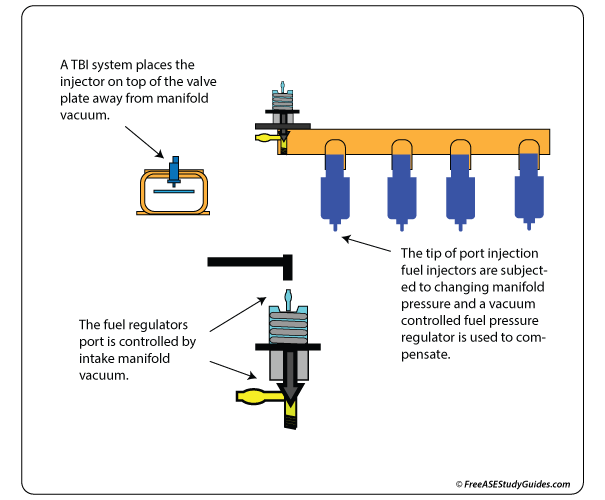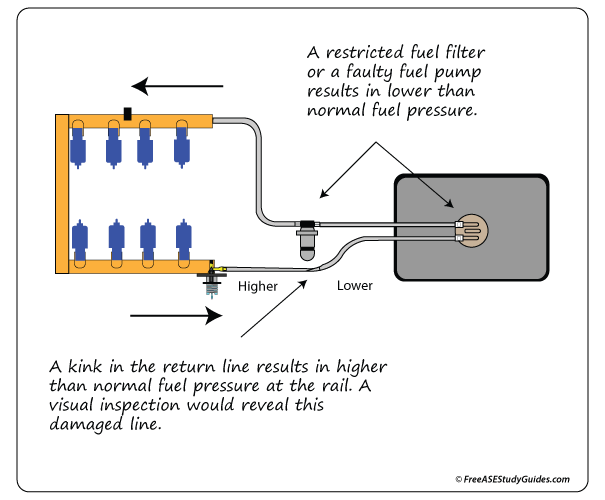Fuel Pressure Regulators
When manufacturers first switched from carburetors to fuel injection, most of these engines contained TBI throttle body injection systems. The fuel injectors were located above the throttle plate and unaffected by the intake manifold vacuum.

Today's multiport fuel-injected engines are port-injected, and the fuel injector's tips extend into the intake manifold just above the intake valve. A vacuum-controlled fuel pressure regulator contains a diaphragm that moves with fluctuations in vacuum pressure.

When fuel pressure at the regulator is high enough, it overcomes the spring's pressure without vacuum assistance. The engine's vacuum is high at idle and assists the valve's opening. The opening valve lowers the fuel pressure at the rail by allowing more fuel to circulate back to the tank through the return line. A kinked and restricted fuel return line raises pressure at the fuel rail.
When the engine accelerates, fuel demand is high, and the intake manifold's vacuum is low. The fuel pressure regulator is closed under these conditions, restricting flow through the return line and increasing fuel pressure at the fuel rail, providing more fuel to the injectors.
Disconnect the vacuum hose from the regulator with a fuel pressure tester attached to the service port on the rail. There should be an increase in fuel pressure. Reconnecting the hose should return fuel pressure to specifications.